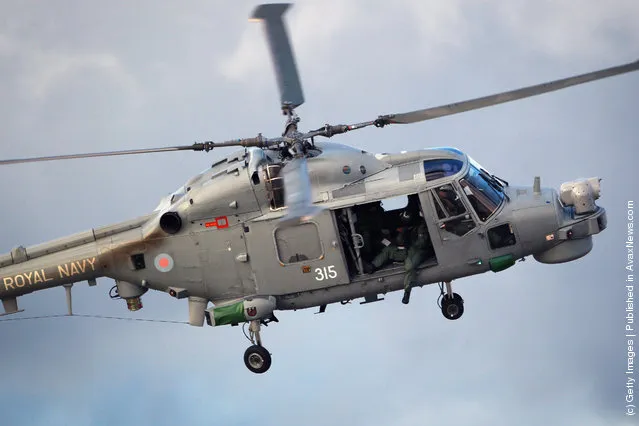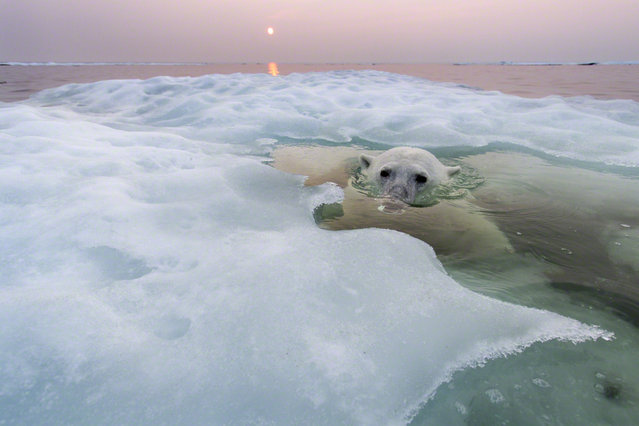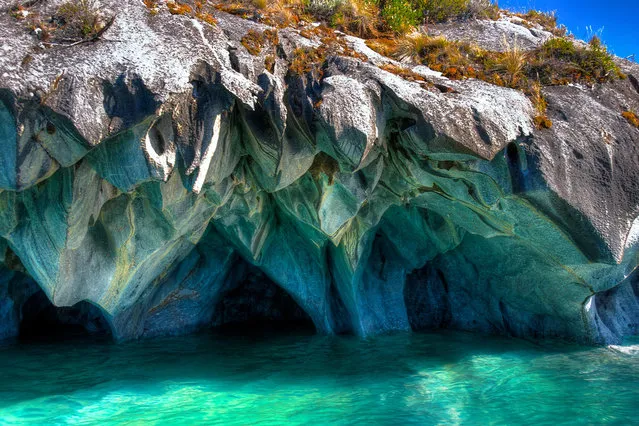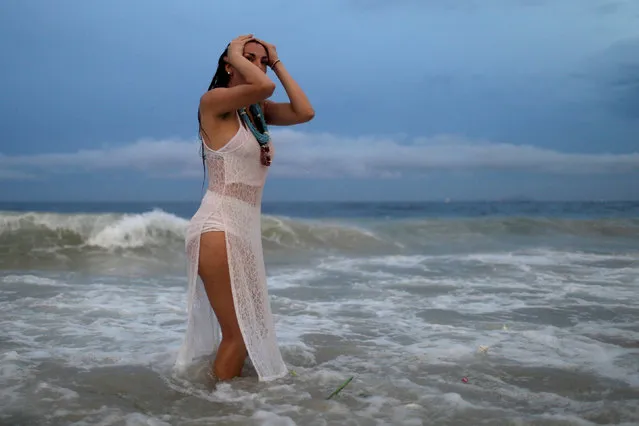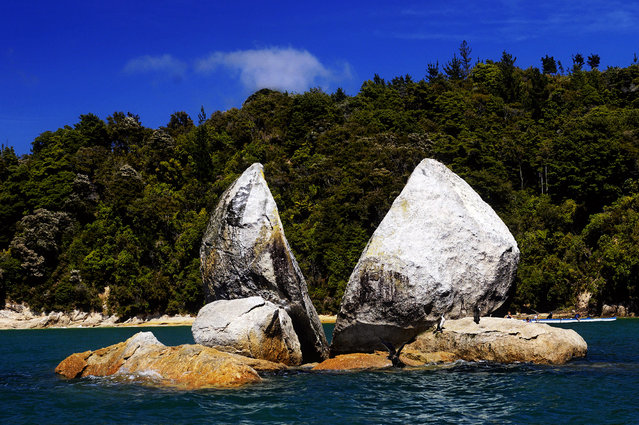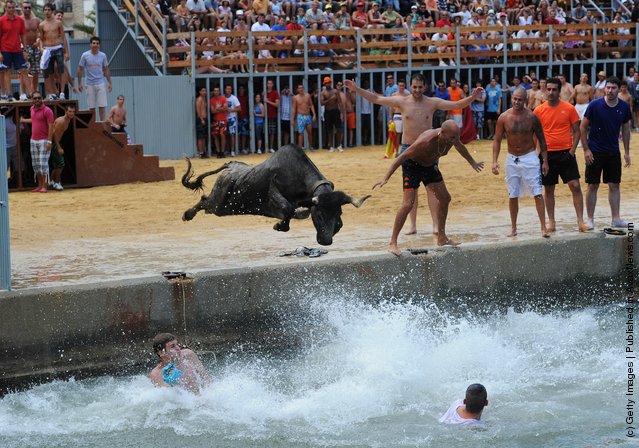
Revellers chase a bull into the sea during the “Bous a la Mar” festival on July 14, 2011 in Denia, Spain. The Spanish “Bous a la Mar” or “Bulls to the Sea” festival is held in honour of the Santisima Sangre and commemorate a monk named Pedro Esteve, who, as the legend has it, saved the coastal town of Denia from a plague in 1633. The bulls chased into the sea are later brought back to land by small boats. (Photo by Jasper Juinen/Getty Images)
16 Jul 2011 12:47:00,post received
0 comments

